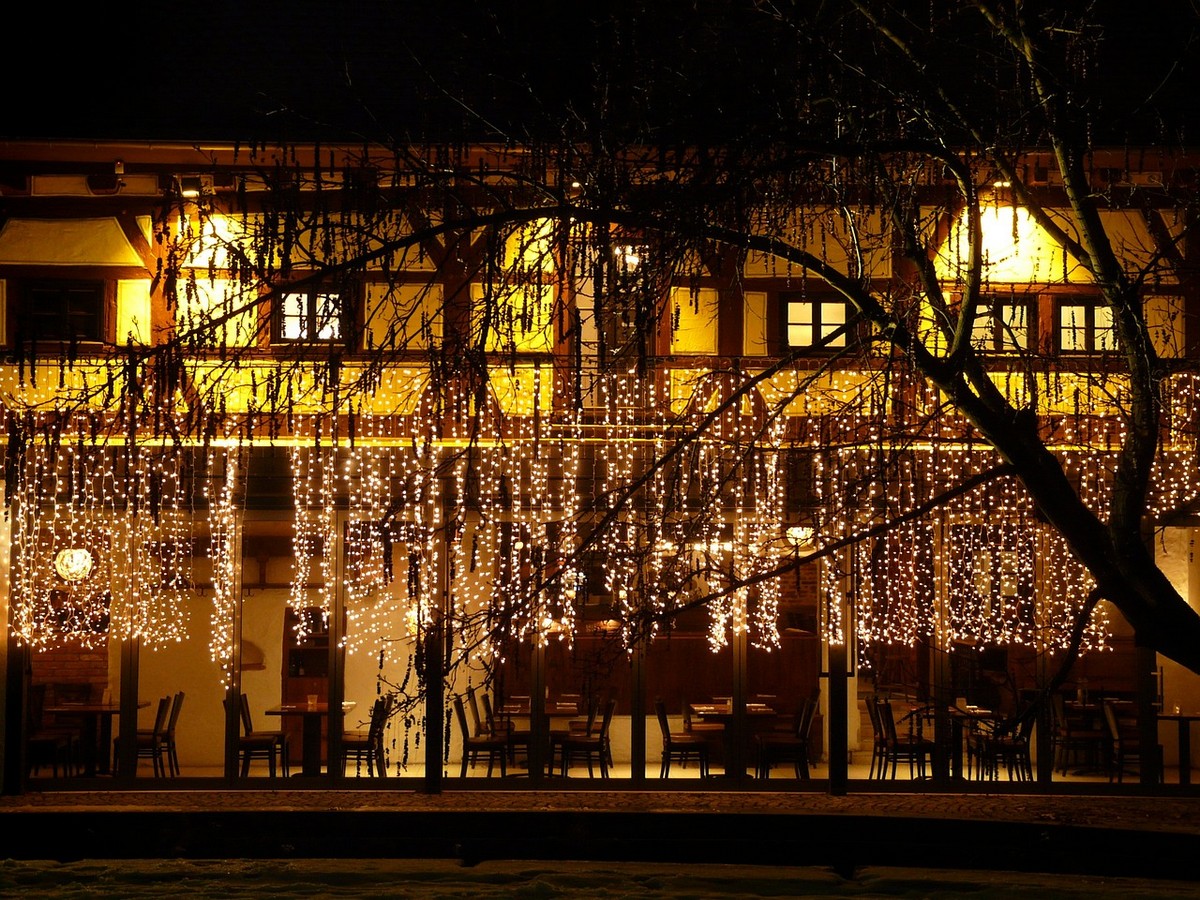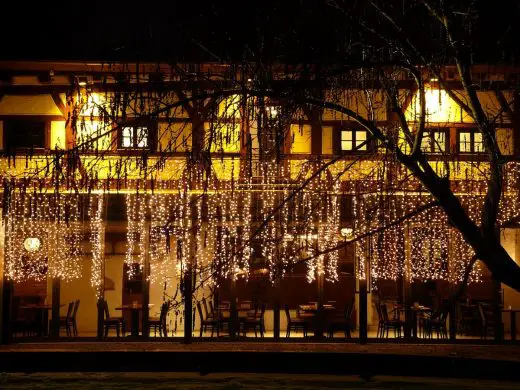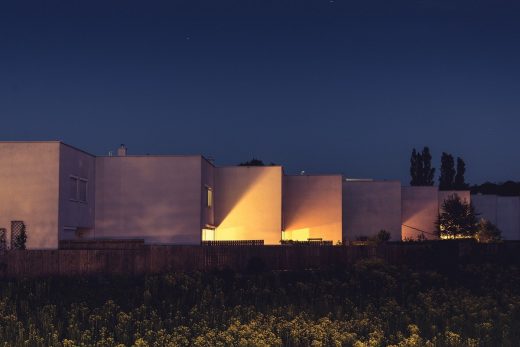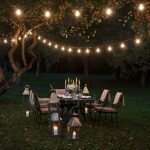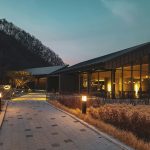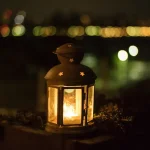Using outdoor lighting to create atmosphere guide, Light trend advice, Property interior design style
Setting the Mood: Using Outdoor Lighting to Create Atmosphere
11 April 2024
Outdoor lighting is not just a functional necessity for navigating your exterior spaces after sunset; it plays a pivotal role in transforming the ambiance of your garden, patio, or any outdoor area.
By thoughtfully selecting and positioning lights, you can illuminate pathways for safety, highlight architectural or natural features for visual appeal, and create inviting spaces that beckon family and guests alike to relax and enjoy the outdoors long after the sun has dipped below the horizon.
Whether you aim to host memorable gatherings, craft a serene oasis, or simply add a touch of whimsy to your outdoor living area, the right lighting can achieve it all, setting the perfect mood for every occasion.
Types of Outdoor Lighting
Before diving into the nuances of creating an atmosphere with outdoor lighting, it’s essential to understand the different types of lights available and their intended purposes. This can help you determine which fixtures best suit your needs and desired ambiance.
Task Lighting
Task lighting is used to illuminate functional spaces such as pathways, stairs, and entryways. These lights provide safety and guidance by clearly defining routes and potential hazards.
Accent Lighting
Accent lighting, as the name suggests, highlights specific features or objects in your outdoor space, such as trees, plants, statues, fountains, architecture, or any other point of interest. This type of lighting adds depth and visual drama to your landscape, creating a focal point and drawing attention to the area. Find out more by talking to professionals in your area.
Ambient Lighting
Ambient lighting creates overall illumination in your outdoor space. This type of lighting can be achieved through various fixtures, including string lights, lanterns, sconces, and wall-mounted lights. Ambient lighting sets the mood and adds warmth and ambiance to your outdoor area.
Creating an Atmosphere with Outdoor Lighting
Now that we have a basic understanding of the different types of outdoor lighting let’s explore how to use them to create an atmosphere in your outdoor space.
Layer Your Lighting
Layering is an essential concept in interior design, and it applies to outdoor lighting as well. You can create a multidimensional and dynamic space by combining task, accent, and ambient lighting. For example, use path lights to guide the way, accent lights to highlight trees or plants, and ambient string lights above to add warmth and charm.
Consider Color Temperature
Color temperature refers to the hue of light emitted by a bulb. It can range from warm (yellowish) to cool (bluish) tones. Different color temperatures can evoke various moods, so it’s essential to consider the atmosphere you want to create when choosing your light bulbs. Opt for warm-colored bulbs for a cozy and intimate setting, while cool-toned bulbs are better suited for a modern or lively ambiance.
Incorporate Dimmers
Dimmers allow you to adjust the brightness of your lights, adding versatility to your outdoor space. You can dim the lights for a romantic dinner or turn them up for a lively party. Incorporating dimmers also saves energy and lengthens the lifespan of your bulbs.
Use Creative Fixtures
Outdoor lighting fixtures come in various shapes, sizes, and styles. Choosing unique and creative fixtures can add character and personality to your outdoor space. Consider lanterns, string lights, or DIY options like mason jar lights for a fun and whimsical touch.
Additional Factors to Consider
Aside from the type of lighting and its intended mood when planning your outdoor lighting, several other factors must be considered to ensure you achieve the desired effect and functionality. These include:
- Energy Efficiency: Opting for LED lights or solar-powered options can significantly reduce energy consumption and lower utility bills. While initially more costly, LED lights have a longer lifespan and are more energy-efficient than traditional incandescent bulbs. Solar-powered lights, on the other hand, harness energy from the sun, eliminating electricity costs for those fixtures.
- Weather Resistance: Outdoor lighting fixtures must withstand various weather conditions, including rain, wind, and extreme temperatures. Look for lights rated for outdoor use and specifically designed to be waterproof and durable against the elements. This ensures your lighting investment is protected and lasts through the seasons.
- Installation and Maintenance: Consider how easy a lighting fixture is to install and maintain. Some lighting solutions may require professional installation, especially if they involve complex wiring or connecting to your home’s electrical system. Additionally, think about the maintenance required for each type of lighting; some may need more frequent bulb replacements or cleaning to maintain their effectiveness and appearance.
- Safety and Security: While aesthetics are crucial, do not overlook the impact of lighting on safety and security. Well-lit entrances, pathways, and dark corners of your yard can deter potential intruders and reduce the risk of accidents. Incorporating motion-sensor lights can add an extra layer of security by illuminating areas as needed.
- Compliance with Regulations: Before installing outdoor lighting, it’s important to check any local regulations or homeowners association rules that may apply. Some areas have “Dark Sky” ordinances that aim to reduce light pollution and may limit the types of outdoor lighting you can use or require fixtures that direct light downward.
- Quality of Your Lights: Finally, invest in high-quality lighting solutions that look good, perform well, and last longer. Quality fixtures may have a higher price tag but can save you from frequent replacements and potential safety hazards.
Using outdoor lighting for atmosphere Conclusion
In conclusion, effectively planning and implementing outdoor lighting can transform your outdoor space into an inviting, versatile extension of your home. By understanding and utilizing the different types of lighting—task, accent, and ambient—you can create a beautifully layered, safe, functional, and aesthetically pleasing atmosphere.
Additionally, considering factors such as color temperature and dimmers and selecting unique fixtures can further customize your space to reflect your style and the ambiance you wish to achieve. By doing so, you not only enhance the beauty and usability of your outdoor area but also contribute to its sustainability and the security of your home.
Comments on this guide to Using outdoor lighting to create atmosphere article are welcome.
Lighting Articles
Lighting Posts
Getting your home filled with light
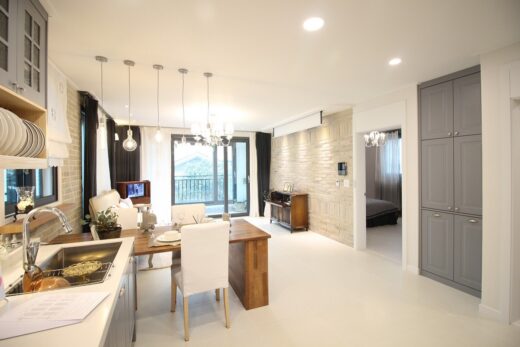
How Lighting Influences Mood and Productivity
Tips To Choose the Right Lighting for Your Home
How to Use Lighting, Space and Material in Architectural Design
Building Articles
Residential Architecture
Comments / photos for the Using outdoor lighting to create atmosphere advice page welcome.

